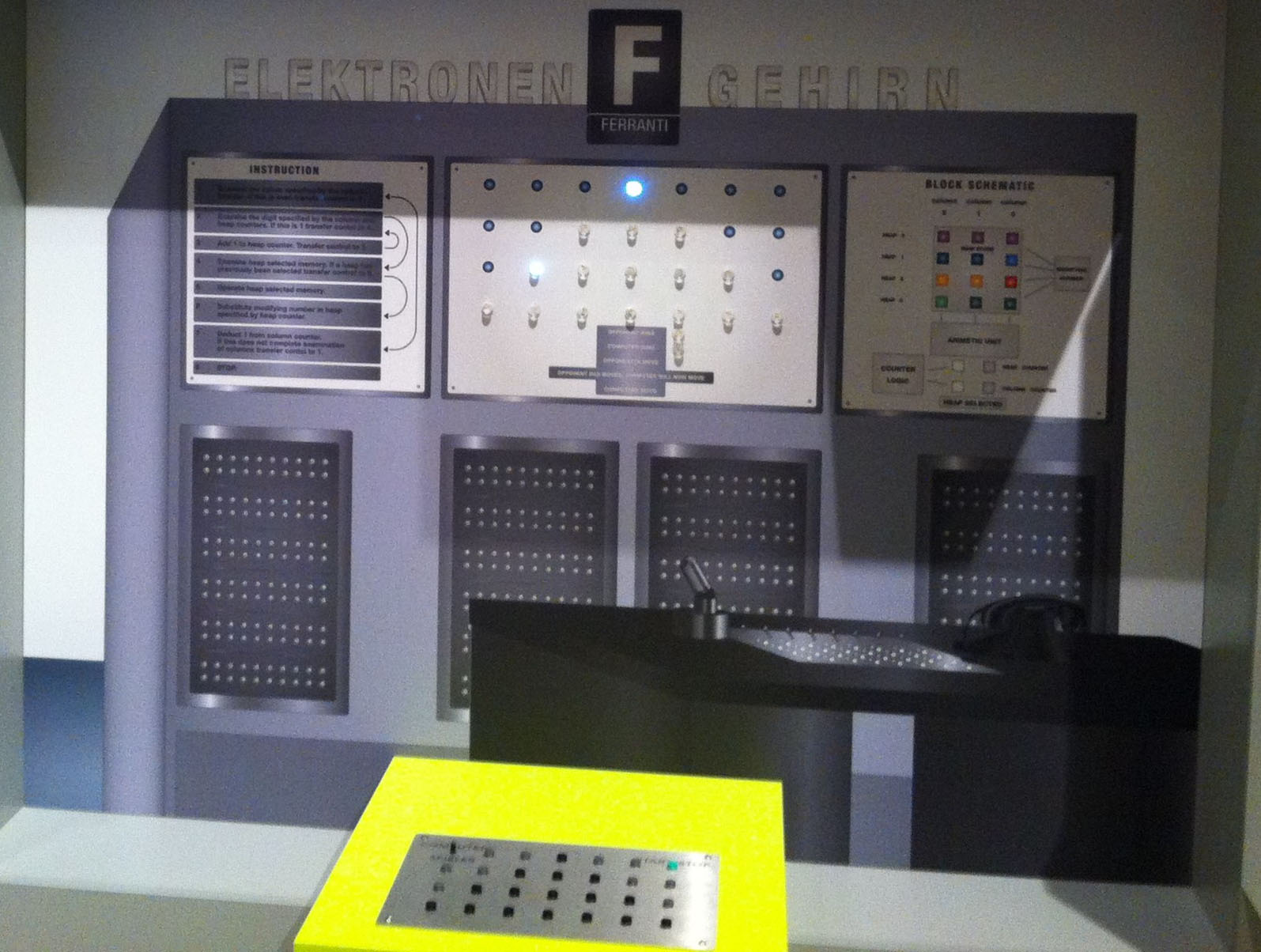-
1951
Hardware Description
The Nimrod, built in the United Kingdom by Ferranti for the 1951 Festival of Britain, was an early computer custom-built to play Nim, inspired by the earlier Nimatron. The twelve-by-nine-by-five-foot (3.7-by-2.7-by-1.5-metre) computer, designed by John Makepeace Bennett and built by engineer Raymond Stuart-Williams, allowed exhibition attendees to play a game of Nim against an artificial intelligence. The player pressed buttons on a raised panel corresponding with lights on the machine to select their moves, and the Nimrod moved afterward, with its calculations represented by more lights. The speed of the Nimrod's calculations could be reduced to allow the presenter to demonstrate exactly what the computer was doing, with more lights showing the state of the calculations. The Nimrod was intended to demonstrate Ferranti's computer design and programming skills rather than to entertain, though Festival attendees were more interested in playing the game than the logic behind it. After its initial exhibition in May, the Nimrod was shown for three weeks in October 1951 at the Berlin Industrial Show before being dismantled.
The game of Nim running on the Nimrod is a candidate for one of the first video games, as it was one of the first computer games to have any sort of visual display of the game. It appeared only four years after the 1947 invention of the cathode-ray tube amusement device, the earliest known interactive electronic game to use an electronic display, and one year after Bertie the Brain, a computer similar to the Nimrod which played tic-tac-toe at the 1950 Canadian National Exhibition. The Nimrod's use of light bulbs rather than a screen with real-time visual graphics, however, much less moving graphics, does not meet some definitions of a video game.
-
Manufacturer:
-
Hardware Type:
Video Game -
Manufacture Year:
1951 -
More Info:
-
We recognize our sponsors starting at $1 per entry.
Learn more at https://www.ithistory.org/benefits

